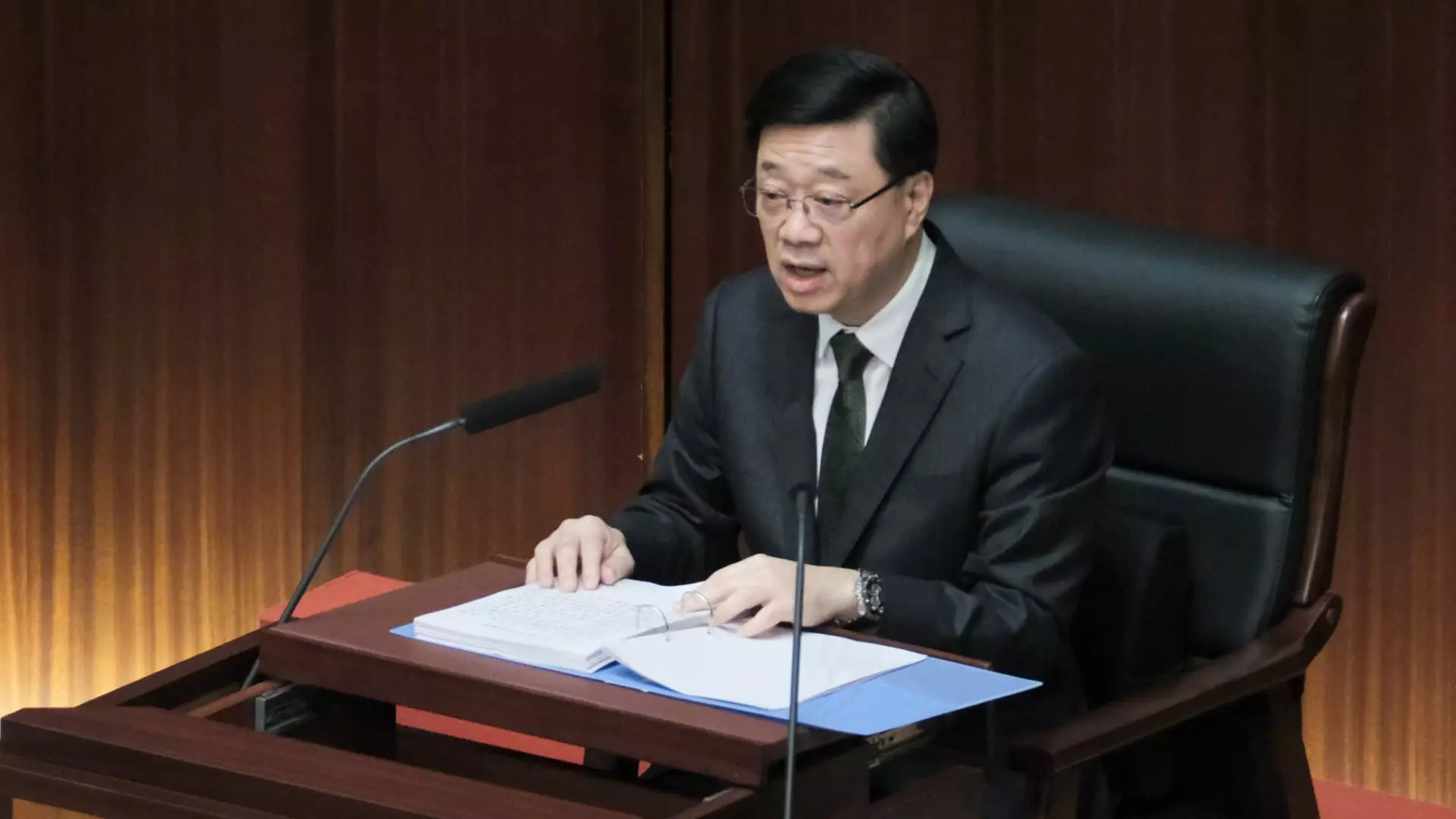Hong Kong’s housing affordability crisis has reached a critical point over the past decade, with the city consistently ranked as one of the most expensive places to live in the world. The ever-increasing demand for housing, combined with limited supply, has led to a situation where many residents, especially younger generations, find themselves trapped in a cycle of unaffordability. As a response to this pressing issue, Chief Executive John Lee delivered his annual policy address, unveiling significant initiatives aimed at easing this burden for the population.
In his speech, Lee highlighted the plight of citizens under 40, acknowledging that the housing market’s current state poses unique challenges for them. He emphasized the government’s responsibility to ensure equitable access to housing, particularly for those who aspire to own their homes amidst soaring property prices. The initiative aimed at providing greater access for younger applicants signifies a potential shift in policy focusing more on housing welfare than previously emphasized economic metrics.
One of the central measures announced in the address is a modification of the application process for the Home Ownership Scheme, which offers subsidized flats for eligible residents. By granting an additional ballot number to applicants under the age of 40, the government is attempting to increase their odds of acquiring much-needed housing. This change serves as a crucial step as younger residents often struggle to secure stable and affordable living conditions, leading to a broader societal impact that extends beyond just real estate.
Additionally, increasing the quota for the “White Form Secondary Market Scheme” gives a further lifeline to young citizens, allowing for a more significant number of subsidized flats that can enter the market without the burdensome land premium calculations. However, with only a limited number of households eligible for these units, it begs the question of whether these initiatives can impact the broader housing landscape or merely provide a temporary reprieve for select individuals.
The commitment to provide approximately 9,500 new public housing units in the upcoming year, moving towards a larger target of 30,000 units by 2027-2028, showcases a proactive approach to combating the prevalent wait times for housing. Currently, those seeking public housing face wait times upwards of 5.5 years, a statistic that is indicative of the pressing need for reform. If successful, the reduction of wait times to an anticipated 4.5 years by 2026-2027 could signify significant progress in the government’s efforts to alleviate the strain on its citizens.
In parallel with these public housing initiatives, Lee’s plan to improve the standards of subdivided flats addresses immediate housing quality crises. The transformation of “substandard” units into “Basic Housing Units” reflects an understanding of both the symbolic and tangible value of decent living conditions, particularly for low-income families. This policy could usher in changes that not only enhance the living conditions for vulnerable populations but also set a precedent for future housing standards in the region.
Despite these positive developments, skepticism remains regarding their long-term effectiveness and sustainability. The crux of the matter lies within Hong Kong’s broader economic framework. As young residents adapt their careers and ambitions in response to the housing situation, a declination in job promotions or salary growth to maintain eligibility for public housing reflects a societal malaise that is counterproductive in economic terms. This complex interplay between housing policies and labor market dynamics points to an urgent need for comprehensive planning that aligns workforce development, affordable housing access, and overall economic growth.
The policy address marks a poignant shift toward prioritizing the livelihoods of residents over more traditional narratives focused on security or post-pandemic recovery. However, to achieve meaningful change, there must be an accompanying commitment to transparency and accountability in implementing these measures. The challenge now lies in ensuring that these policies do not merely serve as a façade for progress but result in tangible benefits that can improve the living conditions and aspirations of a significant portion of the population.
While John Lee’s policy address outlines a vital strategy for tackling Hong Kong’s housing crisis, only time will reveal the effectiveness of these initiatives in fostering a truly affordable housing landscape for generations to come. The road ahead requires a steadfast commitment from the government, along with the engagement of the community, to create a more inclusive future where housing is not just a privilege but a right.


Leave a Reply